Speeding fines increase: here's what you need to know

Speeding fines are surrounded by myth, legend and hearsay. How fast do you have to be going to get a ticket? Ask your pals in the pub, and you'll get several different answers. How many points will you get on your licence? How do average speed cameras work? And is it possible to talk your way out of it?
We'll answer those questions in this article. But perhaps most importantly, we'd like to address something that four fifths of motorists are apparently unaware of: the increase in speeding penalties that kicked in on Monday, 24 April 2017.
New speeding fines for 2017 explained
Honest John reports that 80 per cent of drivers don't know about the new, tougher fines. You could end up paying many hundreds of pounds more for more serious speeding, so while it's worth knowing about the increased cost of speeding tickets, our advice remains the same – stick below the limit, and always drive safely.
When will I get a speeding ticket?
Put simply, as the law stands, you’re liable for a speeding ticket the minute you exceed the speed limit – no ifs, no buts. That means doing 31mph in a 30mph limit, 41mph in a 40, and so on.
Some people say that that should be the end of it – but practically, it makes little sense. Such strict enforcement would force drivers to watch their speedos like hawks, meaning they spend less time watching what’s going on in the world around them.
What’s more, speedometers aren’t always accurate; someone with a speedometer that’s gone out of calibration could innocently think they were doing 70mph, when they were actually doing fractionally more.
To take account of these factors, the National Police Chiefs’ Council (NPCC) suggests police forces don’t prosecute until drivers exceed a margin of error of 10 per cent of the speed limit to take into account driver concentration, plus 2mph for speedometer error.
NPCC speed enforcement guidelines
At a glance | NPCC speed enforcement guidelines
This means that most police forces will not prosecute until you’re driving at more than 46mph in a 40mph zone, for example, or 79mph in a 70mph zone. However, it should be noted that the guidance is exactly that, and that the decision over whether to give a driver a speeding ticket or not is entirely at the discretion of individual police forces and officers.
In other words, you can already be prosecuted for driving at speeds that are above the limit but below the suggested threshold.

How can I be caught?
Speed cameras
The most common way of being caught speeding these days is on a speed camera. These usually consist of a box-shaped housing mounted on a pole, facing away from the direction of travel, and painted bright yellow. You can usually tell you’ve been caught, because the camera will emit two bright flashes as you pass by.
Another way to be caught is on an average speed camera system. This uses a series of CCTV-style cameras, usually mounted on yellow-painted posts, to record vehicle registrations as they pass by. From this information, the system can work out how fast you’ve been travelling between each camera; if your average speed between two cameras is above the threshold set for prosecution, you’ll get a ticket.
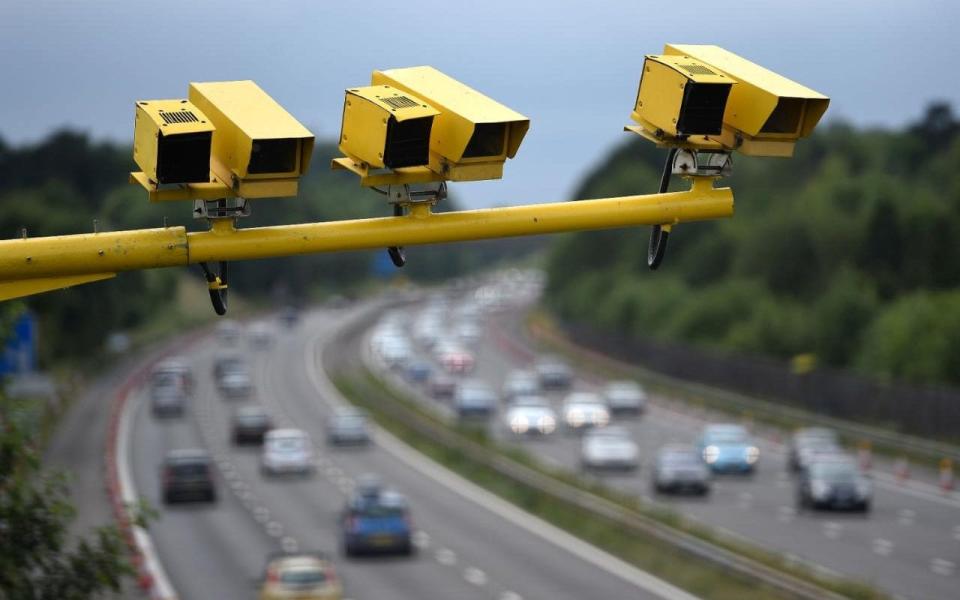
Some safety camera partnerships use mobile speed camera vans, which can be positioned within accident blackspot zones to catch people breaking the limit. They aren’t there all the time, of course, but they usually have bright yellow markings, and you can spot them because they’re parked up at the side of the road with a window open, through which the camera can often be seen.
Other forces use speed traps to catch speeding drivers. These work by using strips laid into the road to measure speed; the strips are connected up to a portable camera, which takes a picture of the car if it crosses the speed-sensing strips too fast. Again, they’re not in use all the time, and only work when a camera has been connected up and positioned.
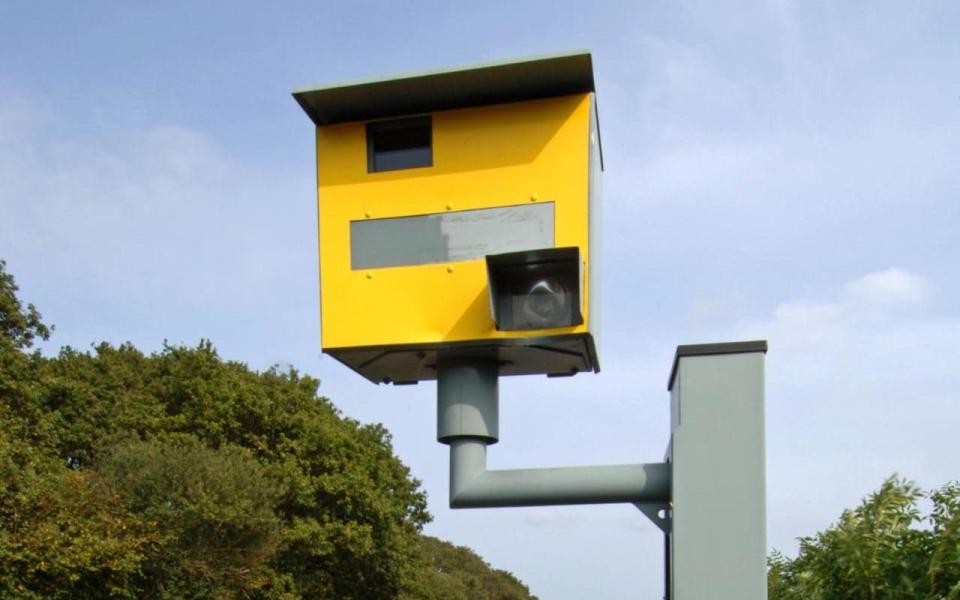
Police officers
Alternatively, you can be pulled over by a police officer. To pull you over and report you, a police officer will have to have evidence of your speed. They can obtain this either by using a speed gun, or through the use of a camera car or bike. (NB: on a motorway, the officer does not need any extra evidence of speeding. The officer's opinion is enough to prosecute.)
A speed gun is a hand-held radar device that officers point at an oncoming car, to provide them with a readout of its speed. Often, one officer will use the speed gun, while another waits further down the road; the first officer then radios ahead a description of the speeding car to the second, who then pulls that car over.
Alternatively, officers who spot a speeding car while out on the road can follow the car and pull it over. While they’re following the car, an in-car camera system can give them a read-out of its speed, and records footage of the car to use as evidence. The officer then uses blue flashing lights to pull the car over, and will deal with the driver in person, usually in the back of the police car.

What happens next?
When a car is caught on a speed camera, the police will find out the address of the owner from the Driver and Vehicle Licensing Agency, and send them a Notice of Intended Prosecution (NIP) and a request to provide driver details in the post. The NIP and the request to provide driver details are two different legal documents but the almost always appear on the same piece of paper. If you’re the owner, you’ll receive this, even if you weren’t the one driving at the time.
If that’s the case, you can fill out a part of the NIP which allows you to notify the police of the name and address of the person who was driving at the time. Be aware, however, that doing so falsely is an offence in itself, and can lead to a prison sentence for perverting the course of justice (or, at the very least, a prosecution for failing to provide driver details, which carries a minimum six-point penalty or a disqualification from driving).
If you were the driver at the time, however, and you accept that you were at fault, you send your details back, at which point the police will either send you an an offer to attend a speed awareness course, a Fixed Penalty Notice (FPN) or a court summons, depending on how fast you were going.
If you agree that you were driving but you dispute that you were speeding then you should reply to the police admitting that you were driving. Then if the police offer a speed awareness course or a fixed penalty you should not accept. The police will send a postal requisition (used to be called a court summons) and you'll have to take your case to the magistrates.
If you are caught by an officer in person, however, he or she will either issue you with an FPN, or advise you that you will receive a court summons, depending on the severity of your offence. You don’t have to accept the FPN – indeed, you have 28 days to reject it – but if you do reject it, you will have to go to court to plead your case.

What’s the penalty? New speeding fines for April 2017
An FPN for speeding will result in three points on your driving licence and a £100 fine. However, if your speed was sufficiently high to land you in court – or if you reject the FPN – the penalties could be much worse; the maximum fine for speeding is £1,000 (or £2,500 on the motorway), and your licence could be revoked.
It's worth noting that fines for speeding change on April 24, 2017 – it's a complicated system, but here's a broad outline, starting with the three main 'bands' of speeding.
Band A – This refers to the lowest level of speeding. For example, you could be driving at between 21mph and 30mph in a 20mph zone, 31mph to 40mph in a 30mph zone, or 71mph to 90mph on a 70mph road. You can expect 3 points on your licence, and a fine of around 50% of your weekly income.
Band B – This is for more serious cases of speeding. If you're in a 20mph zone and you drive at 31mph to 40mph, or in a 40mph zone at 56mph to 65mph, or up to 100mph in a 70mph, that'll be a Band B fine. That means 4 to 6 points on your licence, or disqualification for between 7 and 28 days, plus a fine of 100% of your weekly income.
Band C – This is for the most egregious speeding. If you're doing 41mph or above in a 20mph zone, 51mph or above in a 30mph zone, or above 100mph in a 70mph zone, that's a Band C fine. That means 6 points on your licence or disqualification for between 7 and 56 days, as well as a fine of 150% of your weekly income.
All of these fines are somewhat flexible. Mitigating circumstances (things that could reduce the penalty) include the establishment of a genuine emergency, a lack of previous convictions (or no relevant/recent convictions) and "good character". Aggravating factors (things that could increase the penalty) include certain previous convictions, speeding in bad weather, speeding in a lorry, bus or taxi, speeding while towing, speeding while driving for hire or reward, speeding with passengers, or speeding somewhere particularly inappropriate, like near a school or crowded shopping street.
Speed awareness courses
As an alternative to an FPN, most forces offer a speed awareness course. This is a course which takes place on one day, and as its name suggests, is intended to make participants more aware of their speed.
It’s offered only at the force’s discretion and cannot be requested. The advantages are that you won’t get any points or a fine, but the disadvantage is that you have to pay a hefty fee for your place on the course. What’s more, some car insurers have now taken to asking whether you have attended a course, and ramping up premiums if so, just as they would if you had opted for the points.
Can I appeal?
You can’t appeal an FPN – the only way to achieve any other outcome is to reject it and go to court instead. When you do this, there are two courses of action.
If you plead not guilty, your case will go for trial before magistrates or a judge. The prosecutor will have to prove the case against you. In practice it can be very difficult to challenge the reading from a speed detection device. You may have to provide evidence in support of your case – you might even need evidence from a qualified expert which can be expensive to obtain. Treat this option with care.
Cars Jargon buster | Essential information for car buyers
The other path to choose is to plead guilty, but with mitigating circumstances. This means that you accept the charge and whatever punishment the judge sees fit, but that you’re also requesting that he or she takes into account other factors which may have caused you to speed – for example, a medical emergency. In practice it is quite unusual for a court to find that there were special reasons for speeding. Even proving that there was a medical emergency would not guarantee that you would not be given penalty points.
If you had 9 or more active penalty points on your licence on the date that you were speeding the police cannot issue a FPN. The case will have to go to court. All drivers who get 12 or more active penalty points are disqualified at court for at least 6 months. The only way to avoid this is to prove that the driver or other people (such as family or employees) will suffer exceptional hardship.
Before deciding to reject an FPN and take a speeding offence to court, you should always seek advice from a legal professional, as it’s a big decision that could leave you worse off than simply accepting the FPN. If you are guilty of speeding you should always accept the FPN unless you are sure that you have special reasons. The penalty at court will always be more than the fixed penalty. You will never be given fewer than 3 penalty points and the fine, costs and victim surcharge will always be more than £100.
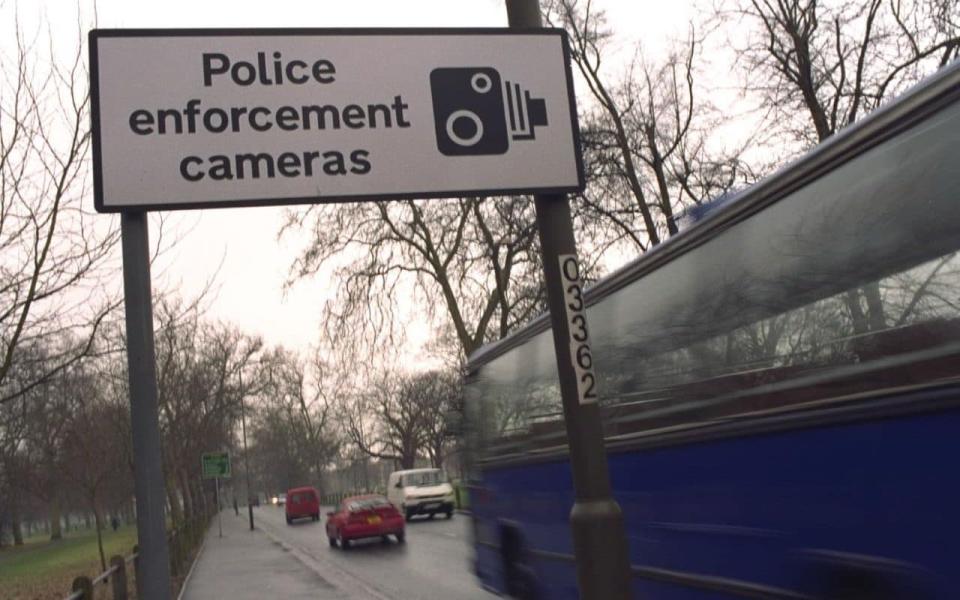
How have other people escaped fines in the past?
A NIP must be served on the registered keeper of the vehicle within 14 days of the day following the offence – so if it doesn't arrive within this period, it can be contested.
Note that the NIP only has to be served on the registered keeper within 14 days. There is no time limit for serving a request for driver details. If someone else names you as the driver, for example if you were driving a company car or a hire car, it is quite likely that the first notice will come more than 14 days after the offence.
Convictions have been overturned in the past on the basis of the calibration of the equipment used. All speed-detecting equipment must have a calibration certificate valid for the day it is being used, and motorists accused of speeding are within their rights to request a copy of this certificate.
But some drivers have escaped conviction with more unusual defences. David Copeland, of Telford, Shropshire, was let off earlier this year when it was established that he had received a fine in error. His vehicle was captured in the same photograph as a motorbike which had broken the speed limit, but it was Mr Copeland who received a ticket – despite the fact that his vehicle was parked at the side of the road and vacant at the time.

Meanwhile, last year, David Erasmus, from Llanelli, West Wales, successfully contested a speeding ticket when he found that the white lines painted on the road as a secondary measure of speed were too close together. Mr Erasmus measured the distances between the lines and found that they were three inches short; his case was dismissed.
And in 2004, Steve Lucas, from St Helens, Merseyside, was let off a charge of driving at 115mph after he managed to prove that the Fiat Punto he was driving at the time simply couldn’t go that fast. Lucas took his car to a test track, where an ex-police driver managed to get it go 104mph, but no faster. His conviction was quashed, but he pleaded guilty to a lesser charge of travelling at 85mph.
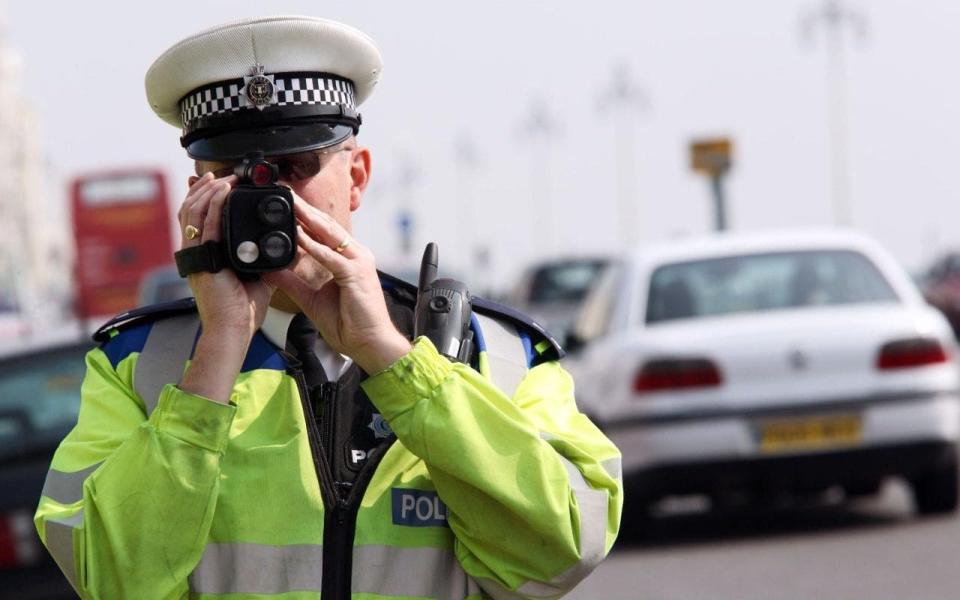
What if I get caught speeding abroad?
In a hire car
If you’re caught speeding abroad in a hire car, you’ll probably have to pay a fine, although you probably won’t have points added to your licence at this stage.
If you are caught speeding by a camera, the police will almost certainly obtain your details from the hire company, and send notice of a fine to you in the post. They may even charge the fine to the hire company, at which point the company will probably seek recompense from you, most likely by drawing on the credit card details you supplied to them.
Of course, if you’re caught speeding in person, you’ll probably have to pay a fine there and then.
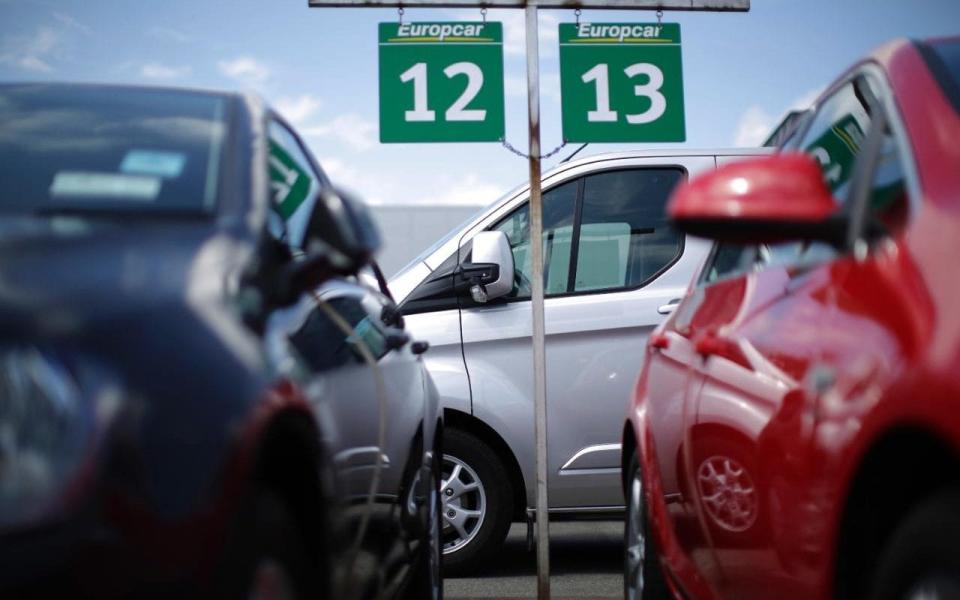
In a UK-registered car
At the moment, getting caught by a speed camera abroad while driving a UK-registered car is unlikely to land you with a prosecution. However, all that’s set to change soon.
It comes down to an EU Directive, which the UK was one of three countries to opt out of, which was intended to facilitate the exchange of information between different countries’ police forces in order to enable them to better enforce traffic offences by foreign drivers.
This directive was annulled in 2014 because it had been introduced on the basis of police cooperation rather than road safety, but a new directive was introduced in May 2015 to replace it, this time with the correct legal footing.
The UK has not opted out of this new directive, and as such will have to comply with it. However, along with the other countries that opted out of the original directive, it has been given two years to instate the relevant mechanisms for information sharing.
So, while the directive is already in force, British authorities won’t have to comply with it until May 2017. From then on, you’ll have to answer for any speeding offences you perpetrate on the continent.
That doesn’t mean you can speed indiscriminately when you’re abroad until then, though. Police still have the power to stop and prosecute drivers in person, while offences caught on speed cameras can still be prosecuted through other channels if the police deem them serious enough.
Thanks to specialist driving offences lawyer Stephen Oldham of Stephen Oldham Solicitors for his help in compiling this guide.
For all the latest news, advice and reviews from Telegraph Cars, sign up to our weekly newsletter by entering your email here
Register Log in commenting policy

 Yahoo News
Yahoo News 